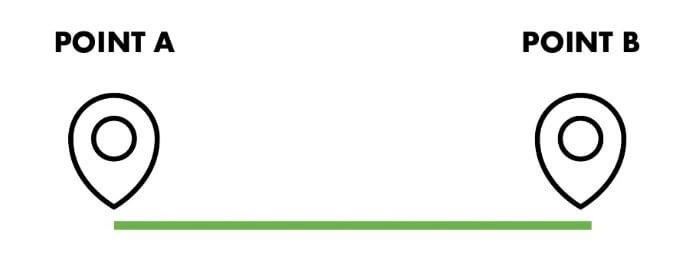每天推薦一個 GitHub 優質開源項目和一篇精選英文科技或編程文章原文,歡迎關注開源日報。交流QQ群:202790710;微博:https://weibo.com/openingsource;電報群 https://t.me/OpeningSourceOrg

今日推薦開源項目:《這玩意就像電影里的那個 edex-ui》傳送門:GitHub鏈接
推薦理由:這個項目能夠讓你的命令行界面變成一個桌面——超酷的桌面。上面放上各種各樣的電腦當前情況,擺個文件管理器和鍵盤,再把畫風放上面一加,就像電影裡面那些超酷的桌面一樣,如果你想要自己試試看成為電影里的主角,或者……用這個讓你的朋友們嚇一跳,都是很容易做到的事。

今日推薦英文原文:《How to Manage Product Strategy and Prioritize Like a Pro? Guide for Product Managers》作者:Alexander Sergeev
推薦理由:如何管理產品戰略和優先順序,主要介紹了產品戰略,按照 GIST 來進行的計劃和對優先順序進行排序的方法
How to Manage Product Strategy and Prioritize Like a Pro? Guide for Product Managers

What will you do in product management if you can not deal with strategic planning? How will you succeed if you are not able to prioritize correctly?
No kidding — a clear strategy and powerful prioritization really matter in product management. Any ambitious product manager should strive to develop skills and abilities that will help him/her to build a great strategy like famous far-sighted commanders.
These thoughts pushed our team to compile best ideas for creating the Ultimate Guide to Product Strategy Planning and Prioritizing.
In this guide, we share the insights for product and project managers and everyone who wants to learn more about product strategy and the power of prioritization.
Why is it worth to be read?
The Guide will be useful for product managers, project managers, marketers, and team leads if they want to know:
- How to define, describe and manage product strategy like a Pro?
- How to apply a GIST planning system, created by Itamar Gilad?
- How to simplify GIST for small projects and small teams?
- How to choose the best way for ideas and features prioritization?
- How to score features using appropriate methods?
Here』re the most important extracts:
Part 1. Product Strategy
Any product strategy is a basis for the entire product lifecycle. It is aimed to achieve a specific objective. Let』s say, it』s like a route getting you from point A to point B.

A product strategy consists of 4 parts: vision, goals, metrics and actionable plan.
- Product vision that includes details on the market opportunity, target customers, product positioning, a competitive analysis, and a market plan. It also describes who the customers are and what they need.
- Product goals that should be measurable and time-bound objectives that have clearly defined metrics associated with them. Product goals help you to set what you want to achieve in the next quarter or another period of time (to increase revenue, expand into new countries, increase mobile adoption, and so on).
- Product metrics that allow you to measure the progress of goals achievement. They should be specific and measurable.
- Actionable plan
Part 2. All about GIST
The concept of GIST planning is clearly described in Itamar Gilad』s article.
In fact, plans quickly go out of sync with reality — the longer they are the more they are wrong. Roadmaps and Gantt charts are helpful, however, there is no room for agility — changes at the top cause huge ripple effects of replanning and project cancellations at the bottom.
The usage of GIST planning system assists to solve such problem: you get the lightweight plans that are built for change. They lower management overhead, improve team velocity and autonomy, set a proper cross-company alignment and ultimately products and solutions.
The author』s version of the GIST planning system as the abbreviation consists of the following blocks:
- Goals describe the company strategy in terms of desired outcomes: where we want to be, by when, and how will we know that we got there.
- Ideas describe hypothetical ways to achieve the goals. They are hypothetical because there can be many ideas on how to achieve a given objective, but at most 1 in 3 ideas will deliver a positive result. Product managers collect all ideas in an Idea Bank, prioritize them using appropriate prioritization methods and frameworks and put as many ideas as possible to the test in order of priority.
- Step Projects occur when the bigger project behind the idea should be broken into small parts, each no more than 10 weeks long (according to GIST). Each step-project is like an experiment that tests the idea.
- Tasks are the parts of every step-project. This part of the system is well covered by Agile planning tools, Kanban boards, and other modern development project management techniques. There is nothing to change at this level.
The process of GIST planning may seem too complicated, that』s why we offer a simplified version of the system.
Part 3. How to simplified GIST?
This planning approach may look redundant for small projects. The Step Projects Itamar Gilad writes about what is needed for large projects when the cost of developing a single feature can reach hundreds of thousands dollars.
Step Projects are really useful for large projects because they help to validate ideas as soon as possible in order not to spend huge sums on the full development of the idea. However, for example, in mobile apps development, you can act without Step Projects. So after we』ve chosen the best ideas with the help of prioritization, we write the tasks for their implementation, collect the requirements, write specifications and push them to development. At the end of the sprint, we put them to production and can collect data and feedback of users.
The simplified process looks easy: we set goals, choose appropriate metrics for control and collect the ideas that can improve these metrics. Then we conduct a Lean prioritization of ideas, apply features scoring, and finally write the task for the features that have won. Then the features get broken into tasks and they are pushed to development. And that』s it.
Part 4. Lean Prioritization is the way to success

There are many prioritization techniques, frameworks, and methods. In the Ultimate Guide, we describe in details the following:
2x2 matrix for prioritization as the classic approach based on the initial Eisenhower matrix with two axes. Choosing the framework, you may set your own criteria and score product ideas, features and tasks. For example, such prioritization methods as Value vs Effort, Value vs Risk, Value vs Cost can be easily visualized with the help of this framework. Here』s the explanation of Value vs Effort system:
ICE Scoring — the simple way to get things done and prioritize product features without extra requirements. All you need is to calculate the score per idea, according to the formula: Impact*Confidence*Ease=ICE Score, where:
Impact demonstrates how much your idea will positively affect the key metric you』re trying to improve; Confidence shows how I』m sure about all my estimates — both about impact and effort (how my estimations look like a truth); Ease is about the easiness of implementation. It is an estimation of how much effort and resources are required to implement this idea.
These values are rated on a relative scale of 1–10 so not to over-weigh any of them. You can choose what 1–10 means, as long the rating stays consistent.
RICE Scoring that includes 4 components: Reach rates how many people each feature will effect within a certain period of time and how many of them will notice the changes; Impact demonstrates how the feature will contribute to the product and how will the project impact your customers; Confidenceshows how I』m sure about all my estimation — both about impact and effort (how much my estimations look like a truth); Effort is estimated as a number of 「person-months」, weeks or hours, depending on needs. It is the work that one team member can do in a specific month.
You need to rank proposed features with a Reach, Impact, Confidence, and Effort, and use the final score you』ve come up with to decide what should be implemented at first.
Part 5. Features Scoring
Weighted Scoring allows evaluating features by your own criteria. Each criterion can have its own weight and scale (from 0…to 10). Using this prioritization approach, you can take your features or initiatives, rank them with the help of a benefit-versus-cost framework on a number of criteria, and then use the scores you』ve come up with to decide which initiatives make the cut. This method of scoring can be useful for companies to evaluate what they think is the relative impact on strategic objectives for a group of possible new features.
Other prioritization techniques and methodologies
Nowadays product managers may find dozens of classic and innovative prioritization techniques and approaches. We combine the most interesting of them in Hygger University section. Here』re top-6 according to their popularity among our users:
What』s next?
If the process of prioritization was successful, then everything is rather simple: all tasks go to development according to Scrum or Kanban and the product manager will have to track their progress.
You may get more details about Scrum and Kanban development from our articles:
Here I』ve tried to combine the most important points from the guide that is posted on Hygger blog. Of course, many of its parts are written here in brief and generally. If you are interested in details and more insights, feel free to dive into the original article.
Have a nice read!
每天推薦一個 GitHub 優質開源項目和一篇精選英文科技或編程文章原文,歡迎關注開源日報。交流QQ群:202790710;微博:https://weibo.com/openingsource;電報群 https://t.me/OpeningSourceOrg
